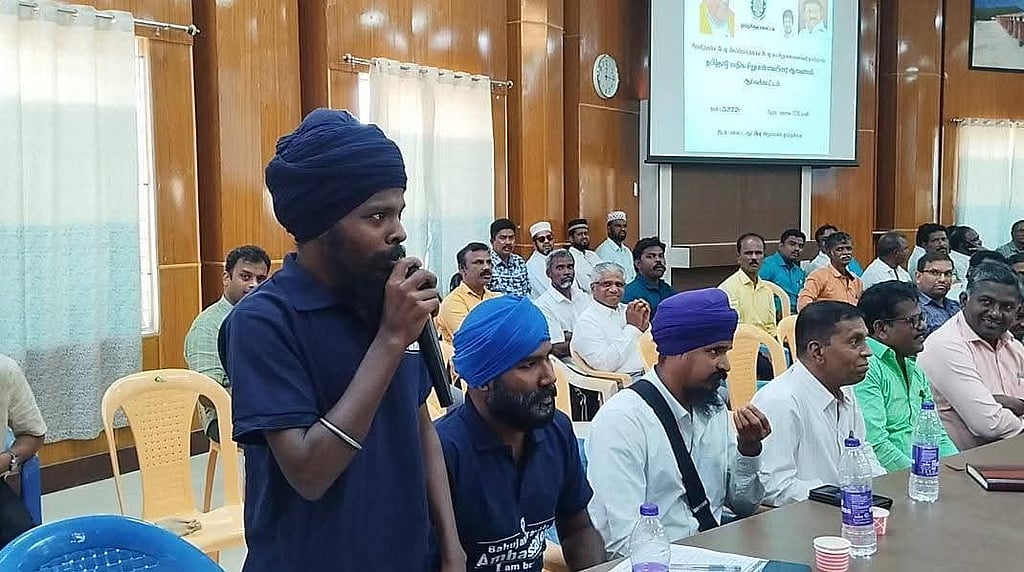“Sikh Community Seeks Comprehensive Legal Framework Beyond Symbolism”
Indian Express, Sep 22, 2025

Key Arguments
- Supreme Court Directive
○ The SC directed states and Union Territories to ensure registration of Sikh marriages under the Anand Marriage Act, 1909.
○ This comes after long-standing criticism that Sikh marriages were being subsumed under the Hindu Marriage Act (HMA), undermining distinct Sikh identity.
- The Anand Marriage Act & Amendment
○ The Act provides a separate legal framework for Sikh marriages.
○ The 2012 Amendment allowed states to register Sikh marriages under this Act, but did not make nationwide provisions for registration.
○ Lack of clarity and implementation has forced many Sikh couples to register under the Hindu Marriage Act.
- State Inaction and Central Intervention
○ Despite the Act, many states did not notify rules for Sikh marriage registration.
○ The SC’s order mandates uniform implementation, but gaps remain: states still hold discretionary powers on registration.
- Unresolved Issues
○ The Act does not cover provisions for divorce, succession, or inheritance, compelling Sikhs to rely on the Hindu Marriage Act for disputes.
○ Critics argue that this perpetuates legal ambiguity and dilutes Sikh identity.
○ Sikh leaders emphasize that true equality requires recognition of Sikhs as a separate community in legal terms, not just symbolic legislation.
Author’s Stance
● The article adopts a critical but balanced stance.
● While welcoming the SC’s directive as a step forward, it highlights that the order does not resolve the structural legal gaps.
● The tone suggests skepticism about the government’s and judiciary’s seriousness in recognizing Sikh marriage rights fully.
Possible Biases
● Community-Centric Focus: Strong emphasis on Sikh identity and grievances, less on administrative or legal complexities states face.
● Critical of State & Judiciary: The piece implicitly questions the adequacy of reforms and portrays the SC directive as half-hearted.
● Limited Alternative Perspective: The article does not explore the counterargument that broader personal laws (like HMA) provide uniformity and reduce fragmentation.
Pros and Cons
Pros
● Raises awareness about gaps between symbolic recognition and practical legal rights.
● Brings out Sikh community concerns about identity and equality before law.
● Places the issue in context of constitutional rights and federal obligations.
Cons
● Overemphasis on identity politics, with less focus on practical administrative hurdles in implementing a separate framework.
● Does not fully explore implications for interfaith marriages or wider personal law reform.
● Risks portraying the issue as exclusive to Sikh concerns, without situating it in India’s larger debate on uniform civil code vs. community-specific laws.
Policy Implications
- Uniform Implementation
○ The Centre and states must notify rules to operationalize the Anand Marriage Act uniformly across India.
- Legal Harmonization
○ Broader provisions (divorce, succession, inheritance) must be incorporated to avoid reliance on HMA.
- Community Rights vs. UCC Debate
○ The Sikh demand reflects a larger tension between identity-specific laws and calls for a uniform civil code under Article 44.
- Federalism in Lawmaking
○ Marriage falls under the Concurrent List, requiring coordination between Centre and states to avoid legal ambiguity.
Real-World Impact
● Sikh Community: Gains symbolic recognition but remains dissatisfied due to incomplete legal framework.
● States: Added administrative responsibility to frame rules, risking uneven implementation.
● Judiciary: Faces potential future litigations due to ambiguities in divorce/succession rights.
● Society: Adds another layer to the debate on balancing cultural identity with legal uniformity.
Relevance to UPSC GS Papers
● GS Paper II (Polity & Governance): Supreme Court directives, federalism, minority rights, secularism.
● GS Paper I (Society): Role of religion in law, cultural identity, pluralism.
● GS Paper IV (Ethics): Justice, equality, recognition of minority rights.
● Essay: Topics on secularism, personal laws, identity vs uniformity in a diverse society.
Balanced Summary and Future Perspectives
The SC’s directive to register Sikh marriages under the Anand Marriage Act is a positive but incomplete step. While it acknowledges Sikh identity, it fails to address deeper gaps regarding divorce, succession, and inheritance. Critics see this as symbolic rather than substantive recognition. The article highlights the tension between cultural autonomy and legal uniformity in India’s pluralistic democracy.
Future Perspective:
● Comprehensive amendments to the Anand Marriage Act are required to make it a complete code.
● Dialogue between Centre, states, and community leaders can ensure both identity recognition and legal clarity.
The issue may reignite debates on a Uniform Civil Code, testing India’s ability to balance diversity with equality.

